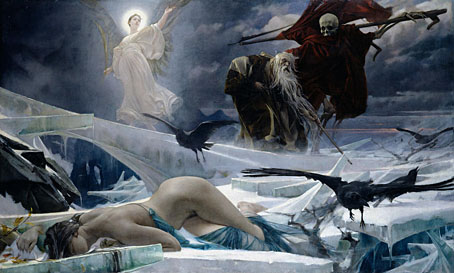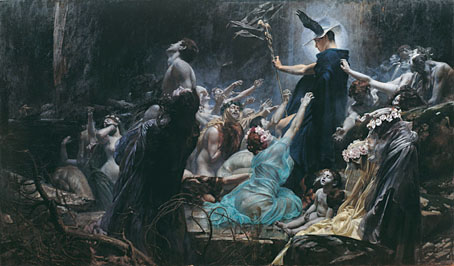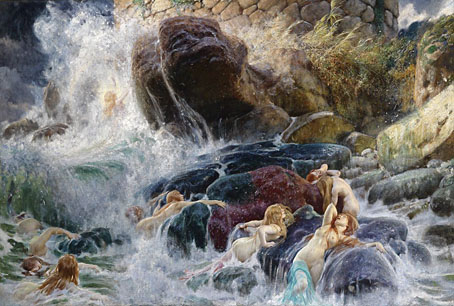Ahasuerus at the End of the World (1888).
Regular readers will know that I have a fondness for the academic or historical painters of the 19th century if their work is sufficiently grotesque, macabre or fantastical. These paintings by Adolf Hirémy-Hirschl push a number of the relevant buttons, especially Ahasuerus at the End of the World which is so immediately startling I can’t imagine why I’ve not seen it before. Hirémy-Hirschl was a Hungarian who pursued his career in Vienna until he fell out of favour with the arrival of the Secession artists.
The Ahasuerus painting is the stand-out piece here, Ahasuerus being the name of the Wandering Jew who was condemned to walk the earth until Jesus returned. What struck me about this was how uncharacteristic it seems for 1888, with everything rendered in a very hard-edged manner; and that’s before you get to the gratuitous dead woman and the skeletal reaper. This is closer to some of the Russian painters of the period than the academic artists in Paris.
The Souls of Acheron (1898).
The Souls of Acheron shows a crowd of the newly dead waiting to be ferried across the river Styx. The Tomb of Achilles seems to be about sea-nymphs mourning the dead hero whose mother was also a nymph; mythology aside, it looks like one of the many 19th-century pictures that use a legend as an excuse to paint more naked flesh. Translucent blue material wrapping a body is a recurrent detail in all three paintings.
The Tomb of Achilles (no date).
Continue reading “The art of Adolf Hirémy-Hirschl, 1860–1933”



